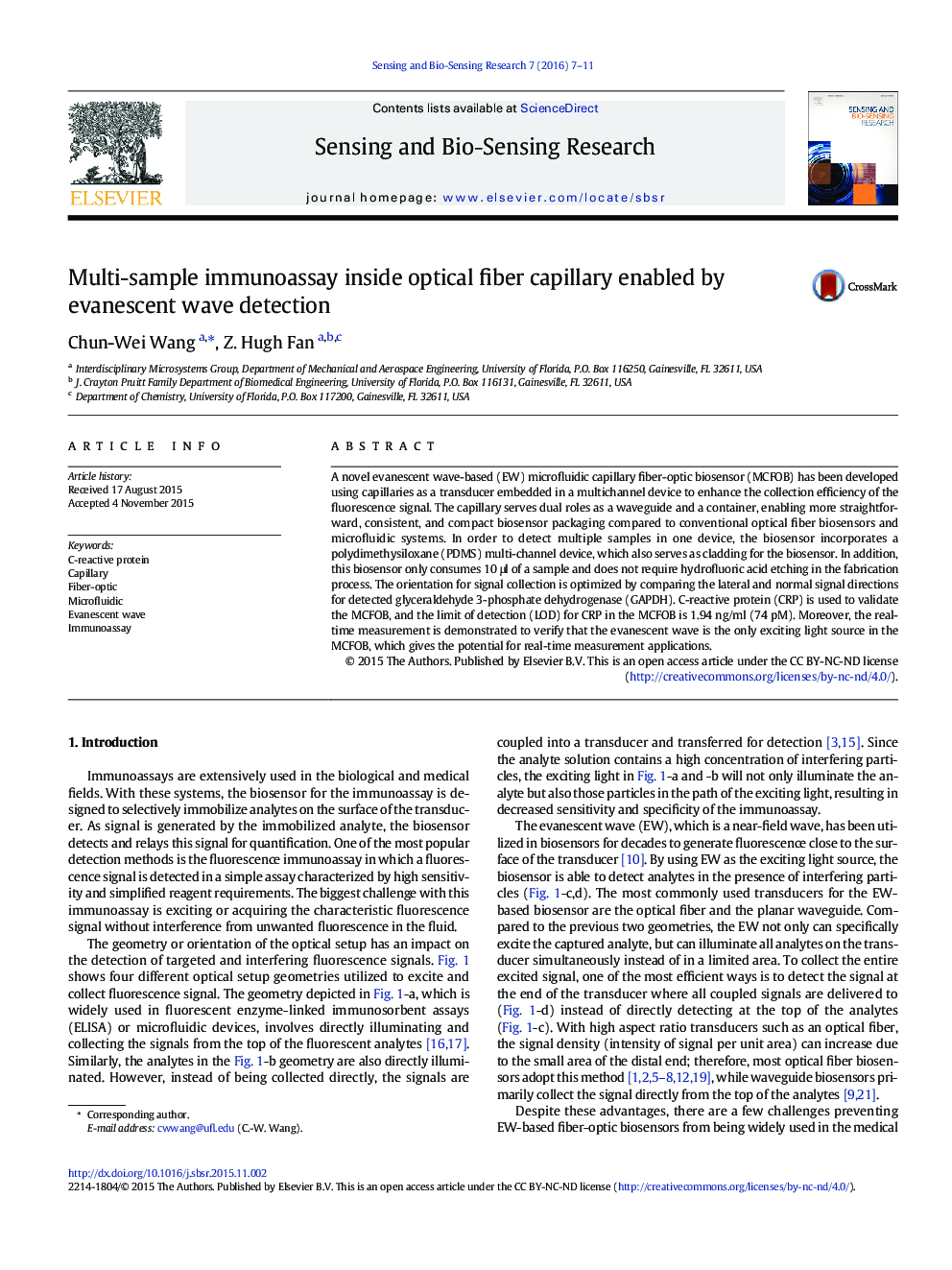| کد مقاله | کد نشریه | سال انتشار | مقاله انگلیسی | نسخه تمام متن |
|---|---|---|---|---|
| 807356 | 1468290 | 2016 | 5 صفحه PDF | دانلود رایگان |
• A novel evanescent wave biosensor combines capillaries with a microfluidic device.
• The patterned light blocker reduces the detection time from probe to probe.
• The geometries of optical setup were discussed and optimized.
• The biosensor was validated by detecting C-reactive protein with low LOD.
A novel evanescent wave-based (EW) microfluidic capillary fiber-optic biosensor (MCFOB) has been developed using capillaries as a transducer embedded in a multichannel device to enhance the collection efficiency of the fluorescence signal. The capillary serves dual roles as a waveguide and a container, enabling more straightforward, consistent, and compact biosensor packaging compared to conventional optical fiber biosensors and microfluidic systems. In order to detect multiple samples in one device, the biosensor incorporates a polydimethysiloxane (PDMS) multi-channel device, which also serves as cladding for the biosensor. In addition, this biosensor only consumes 10 μl of a sample and does not require hydrofluoric acid etching in the fabrication process. The orientation for signal collection is optimized by comparing the lateral and normal signal directions for detected glyceraldehyde 3-phosphate dehydrogenase (GAPDH). C-reactive protein (CRP) is used to validate the MCFOB, and the limit of detection (LOD) for CRP in the MCFOB is 1.94 ng/ml (74 pM). Moreover, the real-time measurement is demonstrated to verify that the evanescent wave is the only exciting light source in the MCFOB, which gives the potential for real-time measurement applications.
Figure optionsDownload as PowerPoint slide
Journal: Sensing and Bio-Sensing Research - Volume 7, March 2016, Pages 7–11
